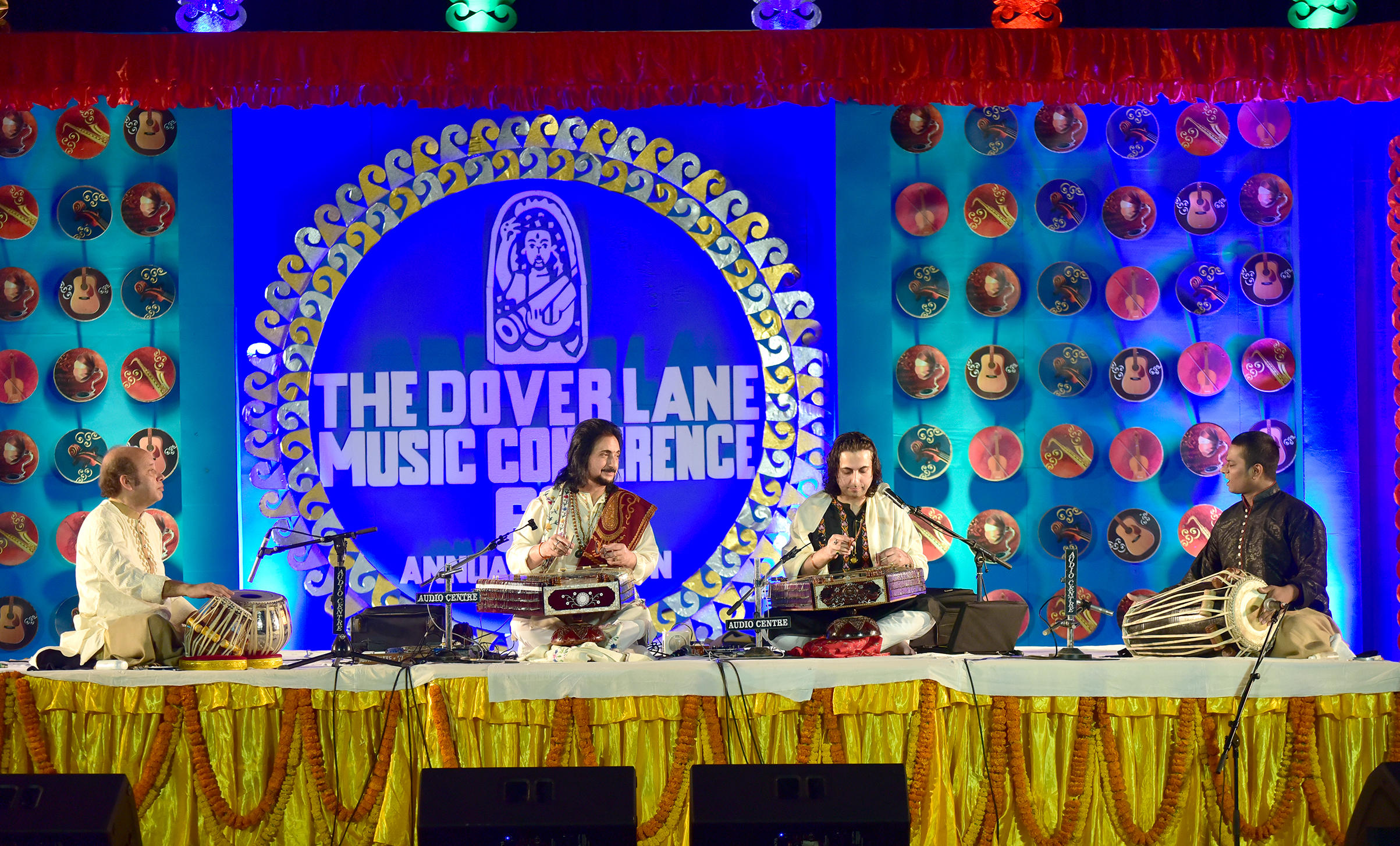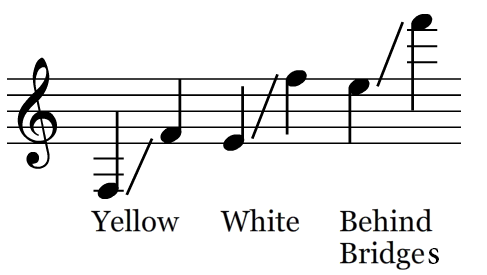|
Santoor
The Indian santoor instrument is a trapezoid-shaped hammered dulcimer, and a variation of the Iranian santur. The instrument is generally made of walnut and has 25 bridges. Each bridge has 4 strings, making for a total of 100 strings. It is a traditional instrument in Jammu and Kashmir (union territory), Jammu and Kashmir, and dates back to ancient times. It was called ''Shatha Tantri Veena'' in ancient Sanskrit texts. Development In ancient Sanskrit texts, it has been referred to as ''shatatantri vina'' (100-stringed vina). In Kashmir the santoor was used to accompany Music of Kashmir, folk music. It is played in a style of music known as the ''Sufiana Mausiqi''. Some researchers slot it as an improvised version of a primitive instrument played in the Mesopotamian times (1600–900 B.C.) Sufi mystics used it as an accompaniment to their hymns. In Indian santoor playing, the specially-shaped mallets (''mezrab'') are lightweight and are held between the index and middle fingers. ... [...More Info...] [...Related Items...] OR: [Wikipedia] [Google] [Baidu] |
Abhay Sopori
Abhay Rustum Sopori (born 7 June 1979) is an Indian Santoor player, music composer and conductor. He is the son of Santoor player Pandit Bhajan Sopori, known for his versatility, innovations and experimentation. Sopori has received awards in recognition of his contribution in the field of music, and is one of the youngest recipients of awards such as 'Bharat Shiromani Award' & 'Ustad Bismillah Khan Yuva Puraskar'. Abhay was invited to speak at the international conference TEDx. Life and career Early life and family Abhay Rustum Sopori was born on 7 June 1979 in the city of Srinagar situated in the Kashmir valley of Jammu and Kashmir. His parents were musician Bhajan Sopori and Aparna Sopori, a professor of English literature. He learned Santoor under the traditional Guru-Shishya Parampara of his mystic Shaivite-Sufi tradition from his grandfather Shamboo Nath Sopori, hailed as the "Father of Classical Music" in Jammu and Kashmir and his father Bhajan Sopori. Abhay repres ... [...More Info...] [...Related Items...] OR: [Wikipedia] [Google] [Baidu] |
Shivkumar Sharma
Pandit Shivkumar Sharma (13 January 1938 – 10 May 2022) was an Indian classical musician and santoor player who is credited with adapting the santoor for Indian classical music. As a music composer, he collaborated with Indian flautist Hariprasad Chaurasia under the collaborative name Shiv–Hari and composed music for such hit Indian films as ''Faasle'' (1985), '' Chandni'' (1989), and ''Lamhe'' (1991). Sharma was awarded the Sangeet Natak Akademi Award in 1986 and the Padma Shri and Padma Bhushan (India's fourth and third highest civilian awards) in 1991 and 2001. Early life Sharma was born on 13 January 1938, in Jammu, which was part of the Jammu and Kashmir princely state then. His father Uma Dutt Sharma was a vocalist and a tabla player. His father started teaching him vocals and tabla, when he was just five. His father saw an opportunity to introduce him to the santoor, a hammered dulcimer, which was a folk instrument that traced its origins to ancient Persia, but wa ... [...More Info...] [...Related Items...] OR: [Wikipedia] [Google] [Baidu] |
Bhajan Sopori
Pandit Bhajan Sopori (22 June 1948 – 2 June 2022) was an Indian instrumentalist. He was a player of the santoor, an ancient stringed musical instrument. Early life and family Sopori was born in Srinagar to Shambhu Nath Sopori on 22 June 1948. Sopori hailed from Sopore in Kashmir Valley and traced his lineage to ancient Santoor experts. He belonged to the ''Sufiana gharana'' of Indian classical music. His family has played santoor for over six generations. His first public performance was at a conference organised by Prayag Sangeet Samiti & the University of Allahabad when he was 10 years old. Career Sopori gave his first public performance in 1953, at the age of five. He learned western classical music from Washington University & Hindustani from his grandfather S.C. Sopori and father Shambhoo Nath. Sopori has taught music at Washington University, US. His performances have been broadcast in India and seen by both cultural associations there and by audiences in count ... [...More Info...] [...Related Items...] OR: [Wikipedia] [Google] [Baidu] |
Rahul Sharma (musician)
Rahul Sharma (born 25 September 1972) is an Indian music director and Indian classical santoor player. The santoor is a folk instrument. Early life Rahul Sharma was born in Mumbai to the Dogra family of Santoor player Pt. Shivkumar Sharma and Manorama, from a family steeped in the tradition of Jammu and Kashmir. His grandfather, Uma Dutt Sharma, was a santoor player. Married to his sweetheart Barkha Sharma in 2009. The couple have a son named Abhinav born on 17 June 2014. Career Rahul started playing the harmonium at an early age. Learning the santoor at age 13, he wasn't completely sure of pursuing music until he turned 17. After studying economics at Mumbai's Mithibai College, Rahul Sharma began performing with his father. He started accompanying him in concerts in 1996, at the age of 24. At the age of 22, Sharma was signed by Peter Gabriel to perform at WOMAD and at the Darbar festival. Having learnt from his father Shivkumar Sharma, Rahul has taken the santoor into w ... [...More Info...] [...Related Items...] OR: [Wikipedia] [Google] [Baidu] |
Tarun Bhattacharya
Pandit Tarun Bhattacharya (born 23 December 1957) is an Indian classical musician who plays the santoor, a type of hammered dulcimer. He studied with Ravi Shankar. He was awarded the Sangeet Natak Akademi Award for 2018. Early life Tarun Bhattacharya was born on 23 December 1957 in Howrah (the twin city of Calcutta), India. He was a commerce graduate from one of the most reputed colleges of Calcutta, and after a few brief years of professional life he started learning music from his father, Rabi Bhattacharya. He later honed his skills under Dulal Roy and finally began learning under Ravi Shankar. Career Bhattacharya is the inventor of "mankas" or fine tuners that help in quick tuning of the santoor. His technique of playing the santoor facilitates the playing of "Krintans, Ekharatans, Boltans" broadening the use of santoor in various traditional art forms. His improvisations on the shape and string arrangements have resulted in a deeper and more classical sound for the santoo ... [...More Info...] [...Related Items...] OR: [Wikipedia] [Google] [Baidu] |
Santur
The santur (also ''santūr'', ''santour'', ''santoor'') ( fa, سنتور), is a hammered dulcimer of Iranian origins.--- Rashid, Subhi Anwar (1989). ''Al-ʼĀlāt al-musīqīyya al-muṣāhiba lil-Maqām al-ʻIrāqī''. Baghdad: Matbaʻat al-ʻUmmāl al-Markazīyya. History The santur was invented and developed in the area of Iran and Mesopotamia. "The earliest sign of it comes from Assyrian and Babylonian stone carvings (669 B.C.); it shows the instrument being played while hanging from the player's neck" (35). This instrument was traded and traveled to different parts of the Middle East. Each country customized and designed its own versions to adapt to their musical scales and tunings. The original santur was made with wood and stones and strung with goat intestines. The Mesopotamian santur has been claimed to be the father of the harp, the Chinese yangqin, the harpsichord, the qanun, the cimbalom, and the American and European hammered dulcimers. Name The name 'santur' co ... [...More Info...] [...Related Items...] OR: [Wikipedia] [Google] [Baidu] |
Hammered Dulcimer
The hammered dulcimer (also called the hammer dulcimer) is a percussion-stringed instrument which consists of strings typically stretched over a trapezoidal resonant sound board. The hammered dulcimer is set before the musician, who in more traditional styles may sit cross-legged on the floor, or in a more modern style may stand or sit at a wooden support with legs. The player holds a small spoon-shaped mallet hammer in each hand to strike the strings. The Graeco-Roman ''dulcimer'' ("sweet song") derives from the Latin ''dulcis'' (sweet) and the Greek ''melos'' (song). The dulcimer, in which the strings are beaten with small hammers, originated from the psaltery, in which the strings are plucked. Hammered dulcimers and other similar instruments are traditionally played in Iraq, India, Iran, Southwest Asia, China, Korea, and parts of Southeast Asia, Central Europe (Hungary, Slovenia, Romania, Slovakia, Poland, Czech Republic, Switzerland (particularly Appenzell), Austria and Ba ... [...More Info...] [...Related Items...] OR: [Wikipedia] [Google] [Baidu] |
Music Of Kashmir
Music of Jammu and Kashmir reflects a rich musical heritage and cultural legacy of the Indian-administered union territory of Jammu and Kashmir. Two different regions of Jammu and Kashmir, consists upper Jammu Division and Kashmir Valley. Music of Kashmir Valley is closer to Central Asian music while music from Jammu region is similar to that of other regions of North India. Kashmir Chakri Chakri is one of the most popular types of traditional music played in Jammu & Kashmir. Chakri is a responsorial song form with instrumental parts, and it is played with instruments like the harmonium, the rubab, the sarangi, the nout, the geger, the tumbaknaer and the chimta. It is performed in folk and religious spheres, by the Muslim and Hindu kashmiris. Chakri was also used to tell stories like fairy tales or famous love stories such as ''Yousuf-Zulaikha'', ''Laila-Majnun'', etc. Chakri ends with the ''rouf'', though ''rouf'' is a dance form but few ending notes of Chakri which ar ... [...More Info...] [...Related Items...] OR: [Wikipedia] [Google] [Baidu] |
Ulhas Bapat
Pandit Ulhas Bapat ( mr, उल्हास बापट; 31 August 1950 – 4 January 2018) was a santoor player from India. Bapat studied under Zarin Daruwala Sharma, K. G. Ginde and Wamanrao Sadolikar. In the film industry, he made his debut with R. D. Burman Rahul Dev Burman (27 June 1939 – 4 January 1994) was an Indian music director who is considered one of the most influential composers of India. From the 1960s to the 1990s, Burman composed musical scores for 331 films. Burman did major work w ... in the film '' Ghar'' in 1978 and continued playing for him until the film '' 1942: A Love Story''. References {{DEFAULTSORT:Bapat, Ulhas 1950 births 2018 deaths Marathi people ... [...More Info...] [...Related Items...] OR: [Wikipedia] [Google] [Baidu] |
Indian Santoor Musician
Indian or Indians may refer to: Peoples South Asia * Indian people, people of Indian nationality, or people who have an Indian ancestor ** Non-resident Indian, a citizen of India who has temporarily emigrated to another country * South Asian ethnic groups, referring to people of the Indian subcontinent, as well as the greater South Asia region prior to the 1947 partition of India * Anglo-Indians, people with mixed Indian and British ancestry, or people of British descent born or living in the Indian subcontinent * East Indians, a Christian community in India Europe * British Indians, British people of Indian origin The Americas * Indo-Canadians, Canadian people of Indian origin * Indian Americans, American people of Indian origin * Indigenous peoples of the Americas, the pre-Columbian inhabitants of the Americas and their descendants ** Plains Indians, the common name for the Native Americans who lived on the Great Plains of North America ** Native Americans in the U ... [...More Info...] [...Related Items...] OR: [Wikipedia] [Google] [Baidu] |
Hammered Box Zithers
{{disambiguation ...
Hammered may refer to: * ''Hammered'' (Motörhead album), a 2002 album by Motörhead *''Hammered'', a 2000 album by the Wicked Tinkers * ''Hammered'' (Bear novel), a 2005 novel by Elizabeth Bear * ''Hammered'' (Hearne novel), a 2011 novel by Kevin Hearne *Hammered coinage *Slang for getting drunk * Hammer paint See also *Hammer A hammer is a tool, most often a hand tool, consisting of a weighted "head" fixed to a long handle that is swung to deliver an impact to a small area of an object. This can be, for example, to drive nails into wood, to shape metal (as w ... [...More Info...] [...Related Items...] OR: [Wikipedia] [Google] [Baidu] |




